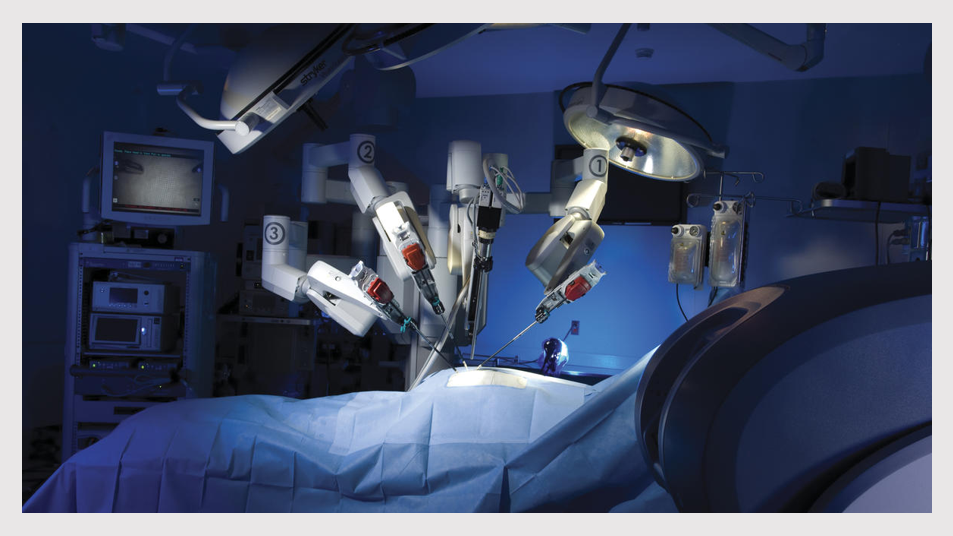News & Trends - MedTech & Diagnostics
Growth of the surgical robotics market in Australia

In Australia, the penetration of surgical robots has been limited to a range of products that are manufactured internationally. Australia is a net importer of capability and many solutions remain expensive leading to the limited the uptake of robotic surgery solutions.
A number of MedTech companies are considered top robotic manufacturers and have products in the market or in the pipeline. They include Intuitive Surgical, Stryker, Accuracy, Medtronic, Smith & Nephew, Global Medical and Zimmer Biomet, Transenterix, CMR Surgical, Johnson & Johnson and Siemens Healthineers.
The market is currently worth USD $5.2 billion and that is expected to grow by at least 28% to USD $7 billion by 2025.
According to David Uffer, Senior Partner, Vice President Medtech of Alira Health, the different types of robots are aligned along the different axis of independence from the user, the complexity and the environmental difficulty in which they are deployed.
“We look at the relationship between the clinician and the robot move all the way from the simplest and the ‘master slave’ (acting at the direction of the operator) through to systems where they are pre-programmed and act semi-automated or independently of the operator.
“The next gen surgical robotics integrates artificial intelligence (AI) within the systems with less dependence on the user to direct those manoeuvres for the robot,” he said at a recent conference session.
Australia is home to 83 Intuitive’s Da Vinci robots (5,500 worldwide) with opportunities to expand this market with the introduction of new surgical robots from Medtronic and Johnson & Johnson. Penetration of robotic surgery in Australia is approximately 2% of all available surgery. In the US, that number is closer to 10%.
In Australia, prostatectomy (radical removal of the prostate due to cancer) is the number one procedure where robotics is utilised – approximately 80% of all prostatectomies are performed on a robot. Interestingly the number one robotics driven procedure in the world, driven by the US market, is hysterectomy.
Kevin Falzon, Senior Director of Sales, Surgical Robotics, APAC, Medtronic, said “Cost is the biggest barrier to the uptake of robotic surgery in the current market. The price has reflected a single player in the market. Once there is growth in the competitive landscape, it will be more cost-effective.”
David Uffer added “It is a scaling operation – increasing production rates and utilisation will expand the market. In the US, there is now a tremendous move toward use of robotics in hernia surgery. It is important to also look at cost effectiveness compared with the clinical outcomes. It should not be purely about cost.
“During the COVID-19 pandemic there has been a reduction in the use of surgical robotics due to the pause in elective procedures. Robotic surgery also requires a lot of training to expand to new surgeons. During the pandemic there have been less training sessions which has contributed to the reduction in procedures.”
Kevin Falzon described the rationale for using surgical robots being that the surgeon is an immersive 3D experience and imaging. Motion scaling improves precision of hand movement and there is the ability to remove tremors. The goal is to bring value to the surgeon, patient and the payer by improving clinical outcomes and efficiencies.
“In the new systems, data and analytics from artificial intelligence and other technologies are used to create a collective surgical wisdom in real time,” he said.
The key barriers to the adoption of surgical robotics include:
- Lack of robust clinical evidence
- High cost
- Challenges with Government or private insurance reimbursement (in some countries)
- Insufficient robotics platforms to train surgeons and surgical teams
- Patient acceptance and demand
Kevin Falzon said “Insufficient robotic platforms to train surgeons is a critical one. In fact, if we look at where the robots are placed in the Australian market, they are predominantly within the private hospital system, used by high volume, well-established private hospital surgeons.
“The surgeons that are going to need robotics skills are the younger surgeons coming through the public training system and yet they do not have access to a robot. It’s a key barrier.
“Large teaching hospitals need to create access by investing in the robots. Changes in government policy is required. NSW and VIC Governments are working on a position statement that may assist,” he concluded.
Health Industry Hub was a media partner at AusBiotech + Invest 2020.
News & Trends - Pharmaceuticals

Is Australia ready to play a leading role in precision nuclear medicines?
Pharma News: A new discussion paper reveals how Australia is ready to play a leading role in the rise of […]
MoreNews & Trends - MedTech & Diagnostics

Roche Diagnostics MD bids farewell after two-decades, leading the organisation to new heights of success
Diagnostics & MedTech News: The Managing Director of Roche Diagnostics Australia, Allison Rossiter, has announced her resignation, effective September 2024. […]
MoreNews & Trends - MedTech & Diagnostics

Minimally invasive procedure a first in epilepsy treatment
MedTech & Diagnostics News: A new MRI guided and minimally invasive surgery has marked an Australian-first procedure for the treatment […]
MoreNews & Trends - Pharmaceuticals

Stakeholders unite in international call to tackle breast cancer gaps and inequities
Pharma News: Breast Cancer Network Australia (BCNA) has united in an international call to raise breast cancer care standards and […]
More